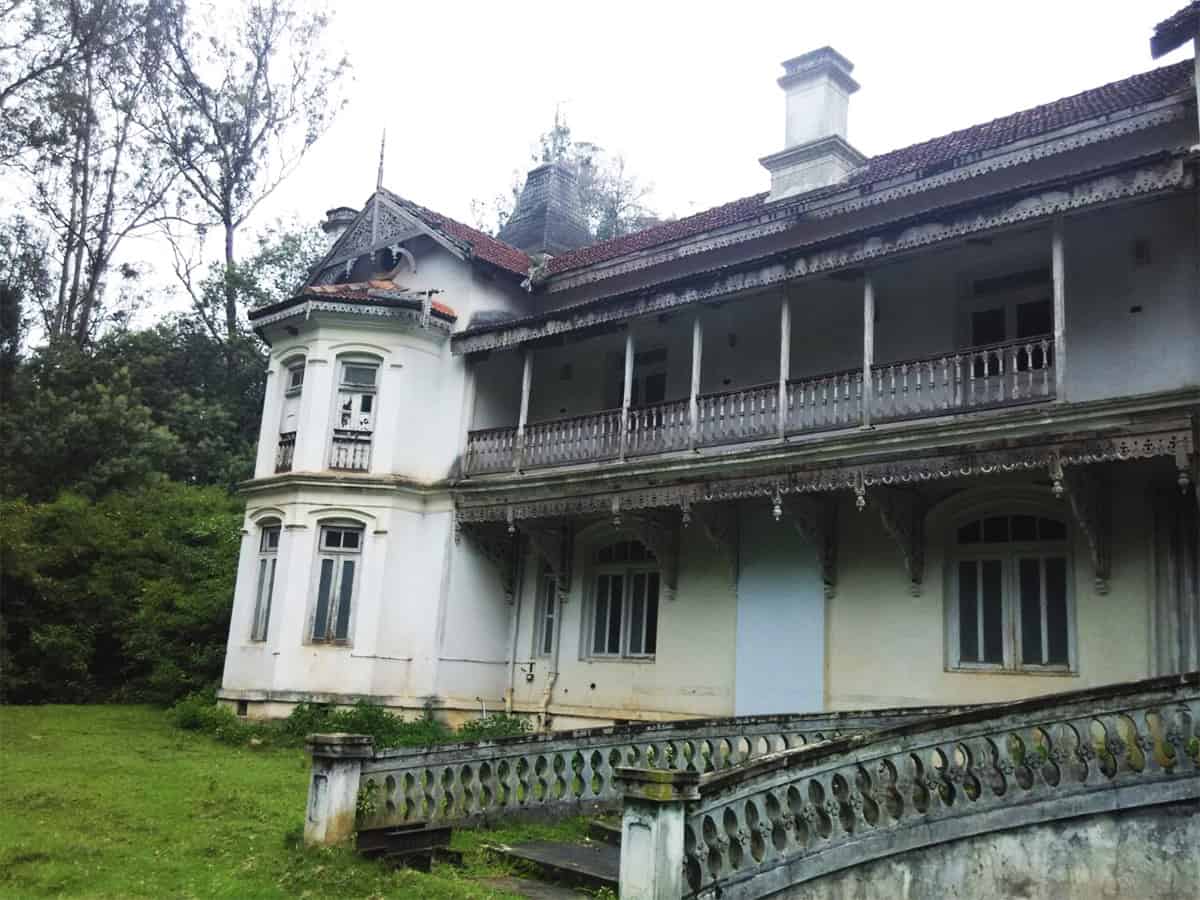
When one googles The Cedars, the Nizam’s Palace in Ooty, the webpage says ‘permanently closed.’ Therefore, it becomes more important for us to document whatever little we can about this summer palace belonging to the Nizam which bears the following physical address: 108J/11, Shoram Palace Road, Bombay Castle, Ooty, Tamil Nadu – 643001. Fascinatingly, it also has another address being known as the Spook’s fav haunt.
Elizabeth Hamilton while documenting her memoirs in the book Feringhees: Sir Robert and Sir William – Two Europeans in India (who were her husband’s great grandfather and her father respectively) gives interesting antecedents about The Cedars Palace that is listed as one of the properties of the former Nizam. Mir Osman Ali Khan, the seventh Nizam of Hyderabad said to be one of the richest men in the world, owned many properties. This summer retreat was located in Ootacamund which was affectionately abbreviated as Ooty by the Britishers and described as a paradise in the foothills of the Nilgiri Mountains of South India.
Mir Osman Ali Khan hardly visited The Cedars Palace which was one of his prized properties. But he happily lent it to the British Residents who were stationed at the Residency in Hyderabad for a sojourn to beat the scorching Hyderabad summers. When Sir William Barton, who was the father of Elizabeth Hamilton, was stationed as the Resident at Hyderabad, he and his wife had the privilege of staying at The Cedars Palace for many months in summer. It should be noted that this gracious stay was given at a time when the Resident’s relations with the Nizam were not cordial. Sir William Barton was trying his best to persuade Lord Irwin, the Viceroy of India, to check the Nizam’s ‘greed’ so that corruption would lessen in the Hyderabad state. Obviously, this was not to the liking of the Nizam who it is said even thought of getting the Resident out of his way. But at the same time the conflicting character of the Nizam was such that he seemed mighty pleased that a baby girl was born to the Resident and his wife at his summer palace in Ooty. The Nizam along with his daughters visited the Resident Sir William Barton at Ooty of which there is a memorable photograph.

From the Rajarshi Shahu Chhatrapati Papers: 1914-1917 A.D. we come across an example of another British Resident at Hyderabad who stayed at the Cedars. This was Lord S. M. Fraser, the former tutor and guardian of H.H. Shahu Chhatrapati. There is a letter written by Fraser to the latter, conveying his gratitude to His Highness for the gift of mangoes that was sent to him. In this same letter he also wrote to the Maharaja about his transfer to Hyderabad in March 1914 and that he had taken a sojourn for six weeks at The Cedars, Nilgiris from 3rd of June 1914 to escape the hot weather of Hyderabad.
Through these examples, it can be surmised that it almost became customary for the Resident at Hyderabad to use this splendid palace for the two summer months every year. For this, the Nizam was even paid rent by the government of India.
While it is not possible to trace the antecedents of the Nizam acquiring this property, by going back in time, it is possible to build upon the history of The Cedars Palace. Eugenia Herbert in her book Flora’s Empire: British Gardens in India says a certain Mr. Rhodes who sowed gorse bushes on the slopes of the Nilgiris built this bungalow around the 1860s which was named The Cedars. It was considered “the most English looking house in Ooty,” both inside and outside surrounded by beautifully planted grounds. Michael Cudmore Furnell, the Principal of the Madras Medical College, in 1874 wrote, “When the permanent residence for the Governor of Madras was being scouted, a suitable residence in the Nilgiris was being identified for him and The Cedars was zeroed in which had cost a lakh of rupees to build at that time.”
When Lord Macaulay, the British historian and politician, responsible for drafting the Indian Penal Code and Western education system in India arrived in Ooty at the invitation of Governor General Lord William Bentinck, he lived in a cottage that was buried in laburnums or something very like them and geraniums that grew in the open air. He was smitten by the beauty of the Nilgiris and said “it had very much the look of an English watering place.” It is not known if the Cedars Palace was already constructed when Lord Macaulay visited Ooty but the task of finding suitable accommodation for the Governor of Madras Presidency was definitely on the cards.
Eugenia Herbert’s book details the English flowers that thrived abundantly in the Nilgiris such as dandelions, docks and thistles which were planted there with seeds imported from England. She also gives details of the heliotrope bush that grew 10 feet high and 30 feet in circumference and geraniums grew as hedges. Such botanical features were the result of a public botanical garden that was created, laid out and supervised in 1848 by a gardener named McIvor who had trained under Joseph Paxton (an English gardener, architect, engineer and Member of Parliament) at Chatsworth. When Lady Canning visited Ooty in the late 1850s or early 1860s, she was impressed with the new varieties of flora in the form of fuchsias, heliotropes, verbenas.
The importance that was given to botanical abundance in Ooty was seen even several decades later when the permanent summer residence of the Governor of Madras was finally built after renting several different palatial houses for years. The Governor’s residence had terraced gardens, sprawling lawns, rose nurseries that provided the advantage of hosting fabulous garden parties.
The Madras Presidency in 1870 regularised the summer exodus of its officers when the whole government took to the hills. Cricket grounds, gymkhanas, libraries and hunt clubs were the perquisites that came along with these trips. This was the main reason that hill stations in India became exciting and relaxing summer retreats for the government staff.
What happened to this magnificent heritage property—The Cedars—of the Nizam is unfortunate. It lies today in total neglect hidden from public gaze and is part of a litigation tussle. The Cedar Palace even came up for sale when many palaces, holiday homes of erstwhile princely states were put up for sale. P C Thomas, an eminent educationist and visionary, entered into negotiations with the Nizam designate Prince Mukarram Jah, for the purchase of the Cedars Palace to start an international school in Ooty. After the final round of negotiations, he even came to Hyderabad with the cheques and securities but he was informed that the sale was put off. He realised later that the sale was never actually intended to happen as the Prince was living in Australia.
In June 2006, a family court judgement in Hyderabad ordered Prince Mukarram Jah who was designated the Nizam of Hyderabad by his grandfather, to pay $1 million to his third wife, Manolya Onur along with the amounts towards mehr payable from 1995 and maintenance payable from 1996 retrospectively. The court also forbade the Nizam from selling or mortgaging the Chiran, Chowmohalla and Falaknuma palaces owned by him in Hyderabad and the Cedar Palace in Ooty. Thus, lies the orphaned Cedars Palace waiting for a new destiny.
Salma Ahmed Farooqui is Professor at H. K. Sherwani Centre for Deccan Studies, Maulana Azad National Urdu University, and Hyderabad. She is also India Office Director of the Association for the Study of Persianate Societies (ASPS).

